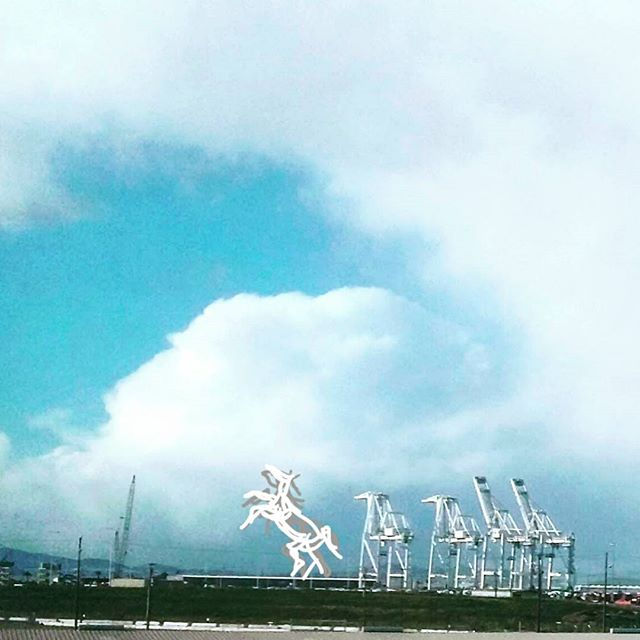Environment & Globalization - Understanding the linkages
- Sakthi R

- May 18, 2020
- 6 min read

Picture courtesy : Irena Gajic Illustration for Foriegn PolicyGlobalisation as a topic is known more to the field of economics, was my perception until now. Casted under energy conservation and environment drew my attention.
This article titled, Environment & Globalisation- Understanding the linkages by Adil Najam, David Runallis, and Mark Hallis, outlines an analysis on globalisation, its meaning, expanse, ways of manifestation and its impact on environment and vice versa (which was more contentious in this context). Viewing environment and globalisation as disciplines and economy, knowledge and governance agents, a new vista for cogitation arrives. The environment as a whole entity with life sustaining ecosystems, watersheds crossing territorial boundaries; gets affected with an act of localised or regional mishap at large. This global inherence of the environment needs careful monitoring & response with coordinated global and regional governance.
Environmental resources provide fuel for economic globalisation thereby addressing development of world at large, saving money, sharing knowledge and an optimum/ judicial way of life
The reading module given, consisting of four articles entailed on topics that conveyed the adverse effects of global warming, its cause, its effect on Indian environments, and its economy & debated on a stance, that we should take in lieu, of our necessity towards growth & development. The articles arouse debate on a ground idea that, Energy consumption though justified towards development, has brought India into a crisis, who has to shoulder the responsibility. While being mere spectator, the more powerful developed nations ran their mills and India was trying to sustain herself amongst her social and political disarray. Arguments apart, with the earth being our common home, finding solutions and adopting strategies should be our major concern to sustain its transcending boundaries, biases and addressing humanity at large.
In this essay, I have tried to analyse the implication raised by the above articles, connections between them, from a global to local/national front, towards sustainable lifestyle in society that in turn, triggers an equitable development.
My approach to this topic will be in 3 parts. Part One, that introduces Climatic changes in India via Physical parameters such as Temperature, Rainfall, Glaciers, Sea level, Atmosphere and Socio-economic parameters like, Energy consumption, Lifestyle. Part Two, that entails an argument on India’s stance to shoulder the responsibility of “saving our planet” (pun intended) and finally, on solutions with India’s perspectives, and mitigations towards a sustainable development.
The Crisis
After Industrial Revolution in the western world, a look back onto its impact on the environment has slapped us onto the realisation of global environment degradation because of a failure to check on consumerism and the greed for development to dominate. With Statistics from The Intergovernmental Panel of Climate Change (IPCC) by the UN, on rise in global temperature by 0.74°C ,increase in CO2 by 33% and an increase in sea level by 17mm over the past 100 yrs. clearly indicate a spurt in Global warming crisis.
Mr J. Srinivasan in his article “Impacts of Climate Change in India” argues that in the wake of global warming, India also faces a regional environmental degradation due to changes in land-use pattern, air and water pollution which can be of greater impact in environmental degradation that can be directly or indirectly linked to swelling of CO2 and other GHG‘s content on the atmosphere. While the Global warming can be tackled by global negotiations, Local environmental concerns require strong local mitigations and action plans to sustain development and normalcy in society. Below we shall look at some physical parameters that have put us on alarm to the climate change in India.
Temperature Rise: In the past 100 yrs, Indian Mean temperature has increased by 0.51°C which is majorly because of variations in daily maximum temperatures. Whereas, the rise in Global Mean Temperature is due to varying trends in minimum temperatures between continents. This indicates fluctuations in surface temperature in India due to different land use patterns, but the global rise in temperature due to GHGs accumulation and positive feedback in atmosphere.
With consumption of fossil fuels, emission of Sulphate particles is inevitable. These compound with water vapour and dust forming aerosol particles that are major elements in reduction of surface temperature and raise atmospheric temperature. The reduction of surface temperature now satisfies the rise in mean max .temperature rise in India. However, a greater problem created by the aerosols is in reducing the contrast in temperatures between land and sea. This affects regular rainfall. Though there is ambiguity in up to what extent the aerosols affect rainfall, they are believed to lessen the efficiency of rain bearing clouds and also pose a major health hazard with their dominance in a living atmosphere.
Flooding & rise in sea level: The rise in ocean temperatures exerts a strong influence on the summer monsoons of India. The equatorial Indian Ocean heats up more that the northern part of the ocean and this triggers extreme rainfall events whose occurrence have increased in the recent past. Glaciers have been melting drastically in the past 500yrs. Gangotri, a high altitude glacier; alone have reduced by 500m in past 25yrs. Though a rise in temperature at high altitudes has been observed, it doesn’t drop enough to melt glaciers. However it is predicted that small glaciers, such as the ones along Himachal is said to disappear in the next 50yrs. With such a scenario of flooding and with major Indian settlement falling along coastlines, serious problems of inundation might have to be faced. An estimated 1m rise in sea level by 2100 is said to inundate 6000 km2 especially at east and west ends of Indian peninsula namely, Bangladesh, Gujarat and west Bengal.
Impacts of such physical parameters due to global climate change is said to affect a raise of temperature by 2°C - 4°C by the year 2100. Extreme heat waves, high mortality rates, increase in vector-borne diseases and also low food produce are predicted to adversely affect the society at large. The socio - economic parameters however involve global politics and a constant international pressure on awareness of energy usage which can be a bane at just the brink of development for India.
The Pin-Point Game
Socio-Economic parameters that might influence the global climate have always been favourable towards India. But the challenge here lies in us being the polite internationalists. Improvement of level of human development ineluctably corresponds to increase in per capita use of energy.
Energy Consumption: India’s Current per capita consumption of energy is only 20% of the global average. Energy consumption as a parameter towards development aims a move from a service led economy to an industrial led economy thereby becoming a sustainable economy. Growth in electricity consumption indirectly proves an increase in GDP. Electricity consumption in India meets a major challenge due to burgeoning financial losses of power utilities and limited indigenous fossil fuel supply. Major source of electricity in India is from Coal, gas turbines, diesel generator sets which constitute 79% of electricity production at low cost per Kwh. But specific CO2 emissions proves less efficiency of fuel.
Energy Consumption vs Development:
The country has a massive development imperative. Despite several impressive technological attainments, in space exploration, nuclear energy, information technology, automobile engineering & agriculture, and with an appreciable line of prosperity and cosmopolitanism amongst its ever growing cities India is still on the path to development. With brimming social problems relating to poverty and population outburst, developing the nation by means of increasing its GDP and thereby consuming energy to achieve an effective produce becomes the fundamental objective. In view of sustainability, the vicious linkage between each below is inevitable:
Development ↔Income (GDP) ↔ Energy use ↔ GHG emissions *
*from Energy, Development & climate change by Girish Sant & Ashwin Gambhir.
The Indian Lifestyle
As Mr Prodipto Gosh argues in, “Climate Change Debate”, India being a country with deep cultural and historical background has been living in poverty for ages, uncontrollable population and a whim to develop has been sown an innate tendency to live with limits amongst Indian citizens. The ‘waste not’ mentality and a deep reverence for nature and all living forms is deeply embedded in the culture of the people. Consumption of energy on processed food, lavish water usage, domestic lifestyle all of it reflect a low run in India.
India by itself is a carbon efficient economy with compact cities, small houses and short travel distances. An inborn cultural intent to reduce and reuse resources bolstered by rational government policies that cater to rich buying fuel at higher prices and providing subsidies on electricity and education for poor, ensure a balanced development thereby aiming at a socially efficient country.




Comments